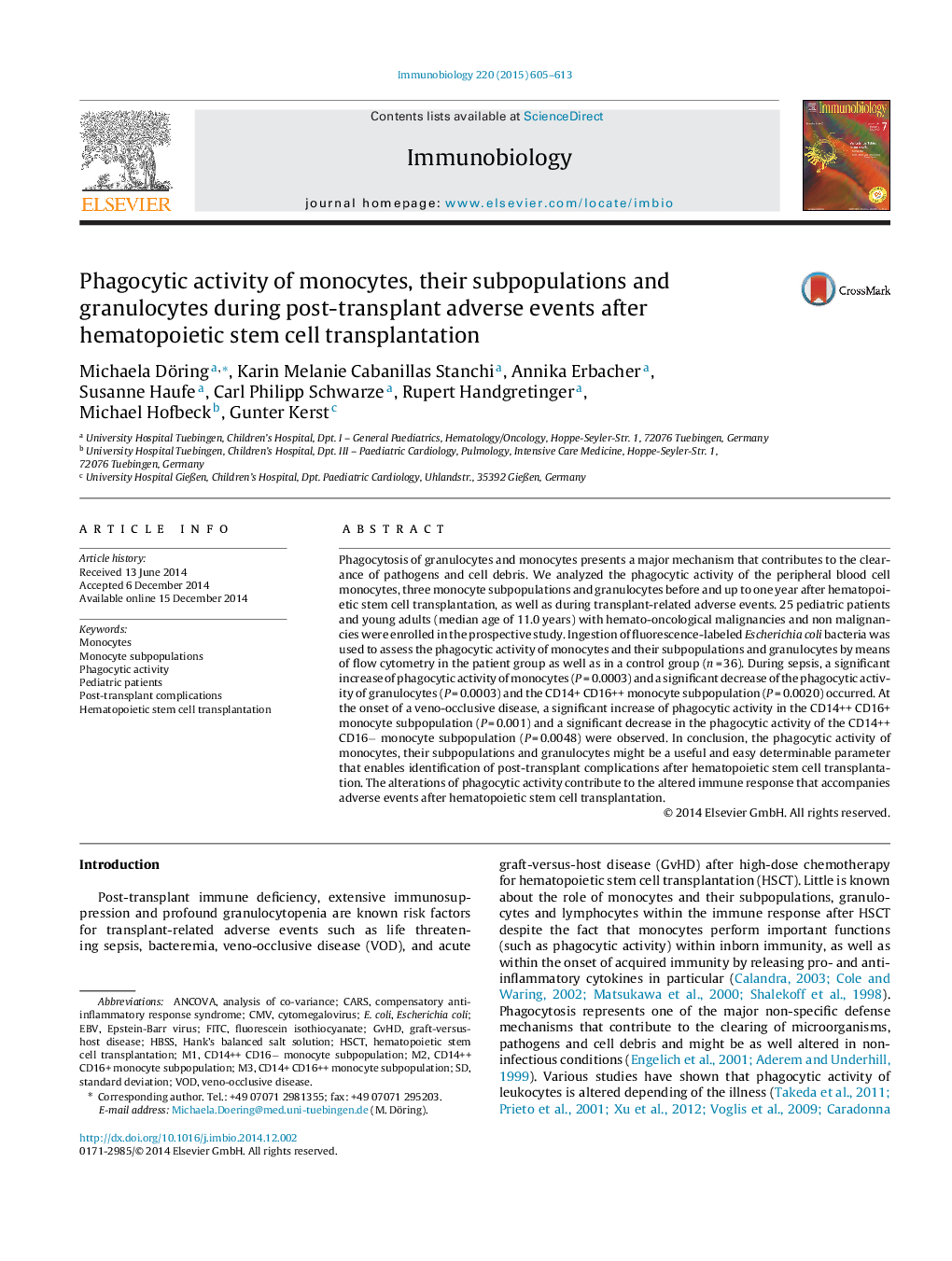| Article ID | Journal | Published Year | Pages | File Type |
|---|---|---|---|---|
| 10940941 | Immunobiology | 2015 | 9 Pages |
Abstract
Phagocytosis of granulocytes and monocytes presents a major mechanism that contributes to the clearance of pathogens and cell debris. We analyzed the phagocytic activity of the peripheral blood cell monocytes, three monocyte subpopulations and granulocytes before and up to one year after hematopoietic stem cell transplantation, as well as during transplant-related adverse events. 25 pediatric patients and young adults (median age of 11.0 years) with hemato-oncological malignancies and non malignancies were enrolled in the prospective study. Ingestion of fluorescence-labeled Escherichia coli bacteria was used to assess the phagocytic activity of monocytes and their subpopulations and granulocytes by means of flow cytometry in the patient group as well as in a control group (n = 36). During sepsis, a significant increase of phagocytic activity of monocytes (P = 0.0003) and a significant decrease of the phagocytic activity of granulocytes (P = 0.0003) and the CD14+ CD16++ monocyte subpopulation (P = 0.0020) occurred. At the onset of a veno-occlusive disease, a significant increase of phagocytic activity in the CD14++ CD16+ monocyte subpopulation (P = 0.001) and a significant decrease in the phagocytic activity of the CD14++ CD16â monocyte subpopulation (P = 0.0048) were observed. In conclusion, the phagocytic activity of monocytes, their subpopulations and granulocytes might be a useful and easy determinable parameter that enables identification of post-transplant complications after hematopoietic stem cell transplantation. The alterations of phagocytic activity contribute to the altered immune response that accompanies adverse events after hematopoietic stem cell transplantation.
Keywords
E. coliFITCVODHSCTanalysis of co-varianceGvHDANCOVAHBSSEscherichia colistandard deviationEBVPediatric patientsVeno-occlusive diseaseGraft-versus-host diseaseMonocyte subpopulationsCompensatory anti-inflammatory response syndromecytomegalovirusCMVphagocytic activityfluorescein isothiocyanateCARSHank's balanced salt solutionMonocytesEpstein-Barr virusHematopoietic stem cell transplantation
Related Topics
Life Sciences
Biochemistry, Genetics and Molecular Biology
Cell Biology
Authors
Michaela Döring, Karin Melanie Cabanillas Stanchi, Annika Erbacher, Susanne Haufe, Carl Philipp Schwarze, Rupert Handgretinger, Michael Hofbeck, Gunter Kerst,
